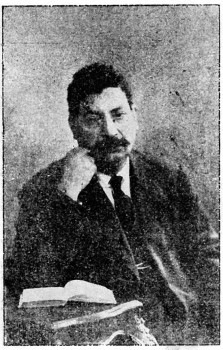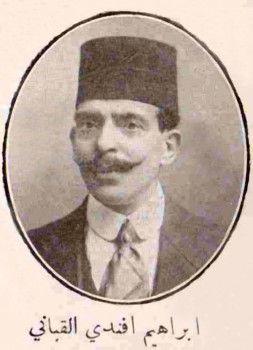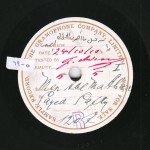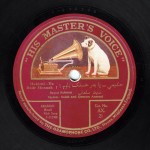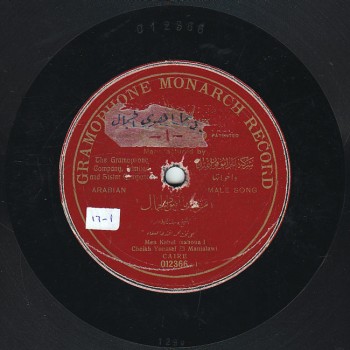 The Arab Music Archiving and Research foundation (AMAR), in collaboration with the Sharjah Art Foundation (SAF), presents “Sama‘ ”.
The Arab Music Archiving and Research foundation (AMAR), in collaboration with the Sharjah Art Foundation (SAF), presents “Sama‘ ”.
“Sama‘ ” discusses our musical heritage through comparison and analysis…
A concept by Mustafa Said.
Dear listeners,
Welcome to a new episode of “Sama‘ ”.
Today, we will tackle a phenomenon that is very similar to the mu‘āraḍa (pastiche) in poetry: a poet would write a qaṣīda on a certain subject and, during the same period or later, another poet would write a qaṣīdat mu‘āraḍa, i.e. a para-poem with the same content, rime, and measure. There are rules to this mu‘āraḍa: poet #2 must write more verses than poet #1.
Instrumental music, for example, features bashraf and bashraf al-naẓīr, i.e. a munāẓara (correspondence) with the previous bashraf composed to the same maqām and including the same number of khāna …etc.
Dawr can be called dawr al-naẓīr, dawr al-mu‘āraḍa, or anything that will convey this meaning: a musician would compose the dawr and another one would compose it again to the same maqām, sometimes with the same word content, modulations, waḥāyid, hank, etc.
Even though this phenomenon is clearly illustrated in two late 19th century dawr, I decided –when I first discovered this phenomenon– to go back to an earlier period, i.e. the era of Khedive Ismā‘īl, and to dawr “Allāh yṣūn dawlit ḥusnak” and “Malīk el-ḥusn fī dawlit gamālak” by the two musician friends ‘Abduh al-Ḥāmūlī and Muḥammad ‘Uthmān.
I will describe this phenomenon based on the two dawr in which I discovered it, and that are also by two musicians who were friends even though Ibrāhīm al-Qabbānī was older than Dāwūd Ḥusnī. Al-Qabbānī’s dawr “Min abli mā ahwa el-gamāl” is older than Dāwūd Ḥusnī’s “Kull mīn yi‘sha’ gamīl”, and both dawr were written by poet Sheikh Aḥmad ‘Āshūr who is not from Khedive Ismā‘īl’s era. He may belong to the end of Khedive Tawfīq’s era or Khedive ‘Abbās Ḥilmī’s era. We can affirm though that both dawr were, or at least that dawr “Min abli mā ahwa el-gamāl” was, composed in the 19th century. We do not know how long after that Dāwūd Ḥusnī decided to “counter” Ibrāhīm al-Qabbānī, yet we are sure that he did before Gramophone recorded Dāwūd Ḥusnī’s dawr. In light of this, we can affirm that dawr “Kull mīn yi‘sha’ ” dates back to earlier than 1903.
We know that dawr “Min abli mā ahwa el-gamāl” was famous in the late 19th century, and we have a cylinder recording of it performed by Sī ‘Abduh Afandī al-Ḥāmūlī added to another cylinder recording in the voice of its composer Ibrāhīm al-Qabbānī.
While all our recordings of “Kull mīn yi‘sha’ gamīl” start from the first Zonophone/Gramophone recording campaign… This dawr was recorded in the voice of a superior performer, Ismā‘īl Ḥāfiẓ, a muṭrib “lost by his people” who unfortunately left very few recordings, the last of which was made in 1905, a date after which we know nothing about him…
(♩)
The two dawr in our possession are to the maqām bayyātī and to the same beat: the madhhab is to the maṣmudī, and the dawr is ‘ala al-waḥda, as usual in most dawr.
Concerning dawr al-mu‘āraḍa or dawr al-naẓīr –when a musician composes a naẓīr (para-dawr) to an existing dawr, and going by the musical appellation such as in the bashraf and the bashraf al-naẓīr–, Sheikh Yūsuf al-Manyalāwī recorded each of “Kull mīn yi‘sha’ gamīl” and “Min abli mā ahwa el-gamāl” twice: once in 1905 with Sama‘ al-Mulūk, i.e. Bekka, and once with Gramophone in 1908. He had decided to record these two dawr one after the other during the same recording session clearly to convey some message.
When I listened to these two dawr, I noticed something unusual…
Dāwūd Ḥusnī had surely heard Ibrāhīm al-Qabbānī and decided to compose a dawr resembling the first one, with a similar meaning of the text content, thus giving the impression of repeating the former one: in dawr “Min abli mā ahwa el-gamāl”, he says “Mālak w-el-hawa yā albī, mā kunt khāliṣ fī na‘īm, we-kunt ā‘id mustarīḥ”. The second one says “La-mā anta mush add el-hawa, bass ti‘sha’ lēh we-tmīl”… As we mentioned, both texts were written by the poet Sheikh Aḥmad ‘Āshūr.
We have several recordings… Note that the recording of these dawr had started before WW1, stopped, then started again in the late 1950s/early 1960s. Such an interruption period was not experienced by other dawr we heard, like dawr “Sallimti rūḥak” by Sayyid al-Ṣaftī and Ṣāliḥ ‘Abd al-Ḥayy recorded in the 1920s and 1930s. So, dawr “Min abli mā ahwa el-gamāl” is older than dawr “Kull mīn yi‘sha’ gamīl” and was thus recorded before the latter. Yet we did not find any cylinder recording of it. It was surely recorded, but not, I think, by ‘Abduh al-Ḥāmūlī who recorded dawr “Min abli mā ahwa el-gamāl”.
Ibrāhīm al-Qabbānī also made a cylinder recording of dawr “Min abli mā ahwa el-gamāl”… Yet we do not know if it was for commercial or for archiving purposes, and we have not found, to date, any 78rpm record of “Min abli mā ahwa el-gamāl” by him.
After the cylinders, the first dawr recorded during the 1903 campaign was “Kull mīn yi‘sha’ gamīl”, not “Min abli mā ahwa el-gamāl”. I do not mean that it was the first dawr ever to be recorded, since “Min abli mā ahwa el-gamāl” had already been recorded on a cylinder. Yet, dawr “Kull mīn yi‘sha’ gamīl” in the voice of Ismā‘īl Ḥāfiẓ –whom we talked about earlier– is among the oldest discs and even among the first discs of the 1903 recording campaign.
- Sayyid al-Ṣaftī, Sulaymān Abū Dāwūd, and Yūsuf al-Manyalāwī all recorded both: dawr “Min abli mā ahwa el-gamāl” and dawr “Kull mīn yi‘sha’ gamīl”. Yet Yūsuf al-Manyalāwī is the only one who recorded the two dawr twice, once with Sama‘ al-Mulūk and once with Gramophone;
- The oldest recordings of dawr “Min abli mā ahwa el-gamāl” are by ‘Abduh al-Ḥāmūlī and Ibrāhīm al-Qabbānī on cylinders;
- Muḥammad Ṣādiq, who is among those who recorded cylinders before discs, later recorded it during Zonophone’s 1905 recording campaign. (Our recording of the dawr was made on a Zonophone disc by Muḥammad Ṣādiq);
- Aḥmad Farīd also recorded it the same year with Odeon;
- Rawḥiyya Aḥmad recorded it at the Radio fifty years later.
Unfortunately, until today, we were unable to find a recording of dawr “Kull mīn yi‘sha’ gamīl” in the voice of Dāwūd Ḥusnī. Let us hope we will some day.
So, along with the recordings of Yūsuf al-Manyalāwī, Sulaymān Abū Dāwūd, and Sayyid al-Ṣaftī, we have:
- Ismā‘īl Ḥāfiẓ’ recording made in 1903 at the beginning of the recording campaign;
- Ibrāhīm Shafīq’s recording made four year later by Odeon. He later taught it to Sayyid Mekkāwī;
- Sayyid Mekkāwī’s recording made in the mid-1950s (He recorded it once during a private jalsa and once at the Radio, or both times at the Radio… we do not know for sure);
- Laure Dakkāsh’s recording made around the same period in Beirut.
For a start, we will focus on those who recorded both dawr, especially Sheikh Yūsuf al-Manyalāwī, since I was introduced to the phenomenon of dawr al-mu‘āraḍa through him. I later found it in several dawr that, I hope, we will discuss at some point.
Let us listen to the madhhab separately, i.e. the madhhab of dawr “Min abli mā ahwa el-gamāl” followed by the madhhab of dawr “Kull mīn yi‘sha’ gamīl” interpreted by different artists, in order to demonstrate how they influenced each other…
(♩)
Have you noticed? Ibrāhīm al-Qabbānī did something that clearly influenced, specifically, the structure of Dāwūd Ḥusnī’s dawr “Kull mīn yi‘sha’ gamīl”, while Ḥusnī added to Ibrāhīm al-Qabbānī’s version… We did explain that in the qaṣīda al-mu‘āraḍa poet #2 must add verses to the initial/previous number.
Let us present both dawr: starting with dawr “Min abli mā ahwa el-gamāl” followed by dawr “Kull mīn yi‘sha’ gamīl”. We will explain later why we reached this result… knowing that we will only reach it if we analyse each dawr separately.
So, as usual, let us listen to the full dawr before starting our tour through the recordings. We will start with Sheikh Yūsuf al-Manyalāwī’s 1908 Gramophone recording, also published within AMAR’s compilation of Sheikh Yūsuf al-Manyalāwī’s full works…
(♩)
Dear listeners,
We have reached the end of today’s episode of “Sama‘ ”.
We will meet again in a new episode to resume our discussion about the dawr al-naẓīr or dawr al-mu‘āraḍa.
“Sama‘ ” was presented to you by AMAR.
- 221 – Zakariyya Ahmed – 12 (1/9/2022)
- 220 – Zakariyya Ahmed – 11 (1/9/2022)
- 219 – Zakariyya Ahmed – 10 (11/25/2021)
- 218 – Zakariyya Ahmed – 9 (10/26/2021)
- 217 – Zakariyya Ahmed – 8 (9/24/2021)
- 216 – Zakariyya Ahmed – 7 (9/4/2021)
- 215 – Zakariyya Ahmed – 6 (8/28/2021)
- 214 – Zakariyya Ahmed – 5 (8/6/2021)
- 213 – Zakariyya Ahmed – 4 (6/26/2021)
- 212 – Zakariyya Ahmed – 3 (5/27/2021)
- 211 – Zakariyya Ahmed – 2 (5/1/2021)
- 210 – Zakariyya Ahmed – 1 (4/28/2021)
- 209 – W-al-Lāhi lā astaṭī‘u ṣaddak 2 (4/6/2017)
- 208 – W-al-Lāhi lā astaṭī‘u ṣaddak 1 (3/30/2017)
- 207 – Bashraf qarah baṭāq 7 (3/23/2017)

